space
A year ago on the Day of Cosmonautics, I tried to tell you about what the cosmos and cosmonautics are good for. But the same question can be tried to answer, coming from the opposite side. How would we live if there were no space activities?

Photo: Yevgeny Katyshev / Wikimedia Commons
Statement of the problem
Let’s say that for some fantastic reason astronautics did not appear in the 20th century. The concrete reason for us is not interesting, so we will not try to think up something plausible, it is much more interesting to imagine what will happen space to humanity.
The most sonorous of frequencies
The biggest problems begin with communication. Several factors start to play against us. The Earth is round, and radio waves are spreading in different ways.
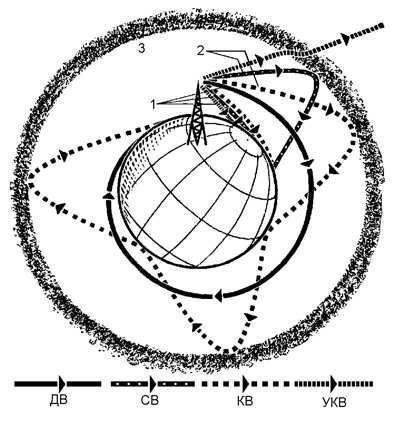
Long waves (DV) spread over the surface and are capable of circling the globe
Middle waves (CB) are able to circle the Earth and reflect off the ionosphere.
Short waves (KV) are reflected from the ionosphere with small losses and do this many times, allowing communication over long distances.
And finally, ultrashort waves (VHF) propagate in a straight line, do not bend around the Earth and are not reflected from the ionosphere.
And if you thought that mankind without cosmonautics will easily switch to longer waves, then I have for you A few unpleasant surprises.
First, the size of the antenna depends on its operating range. And the classical quarter-wave antenna for working at a wavelength of 1 km (range of LW) is 250 m long.
In Ufa there was a radio station RV-1 named after the Comintern, which broadcasted on long and medium waves and used antennas for four
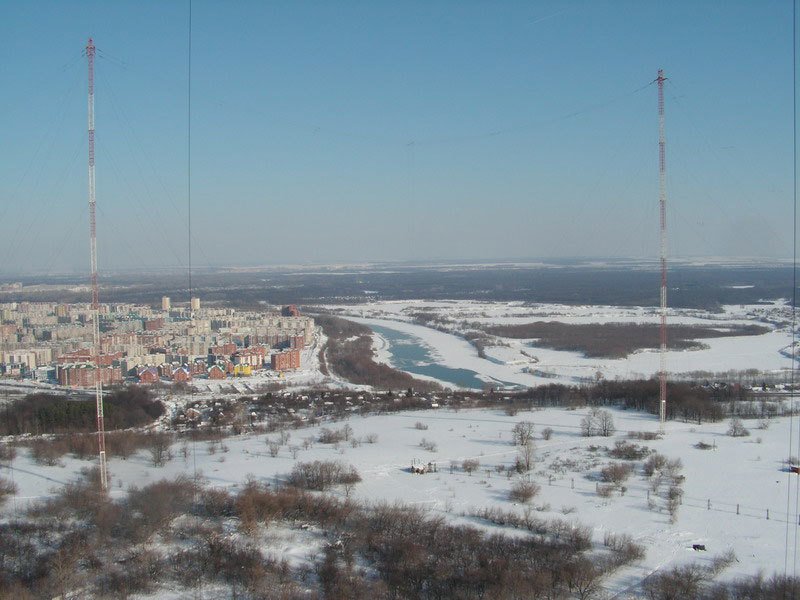
Two of the four antennas, photo radiomap.eu
In our reality these masts were demolished as superfluous in zero, and in an alternative Reality without space, such a building would have every self-respecting country. And the KDPV above shows, perhaps, the most monstrous similar facility in the world – a communications complex with submarines “Goliath” near Nizhny Novgorod. It is used now. In our reality, many radio stations operating on long and medium waves were closed. And in the alternative reality, the range on long waves would be a strategic resource that would be distributed at the level of international organizations, because it would not be trivial to all the countries wishing it.
Secondly, the data rate depends on the channel width and transmitter power. And with the increase in wavelength, the permissible channel width decreases. The voice communication would still fit, but that’s about the Internet in this range you can forget. To be able to transmit data at high speed, you have to reduce the wavelength. And VHF are distributed only in the zone of direct radio visibility. So, in the 20th century it would have to mass build the masts of repeaters.
Photo: Kakidai / Wikimedia Commons
Meet this TV tower “The Heavenly Tree of Tokyo “The height of 634 meters, the highest TV tower in the world. According to an uncomplicated formula, it can be considered that two such towers will be able to communicate with each other at a distance of up to 179 km. If we increase the height of the towers to thousands of meters, then the communication range will grow only to 225 km, the fantastic towers of two thousand meters will be sufficient only for 319 km. At some point, the cost of increasing the height will exceed the benefit of increasing the communication distance, so that the ultra-high towers in the alternative world without space will not appear, but there will be very high ones. By the beginning of the 21st century, like ours, fiber-optic cables will spread, but like repeaters, they will only be in relatively large cities, and the periphery will be difficult to cover. In our world, satellite equipment can be installed even in a very remote village.
Conclusion : Astronautics greatly facilitates communication between people and reduces digital inequality.
Not found, not found
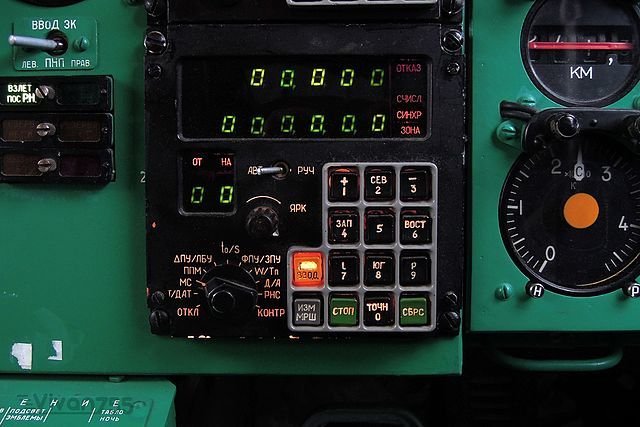
The panel of the RSDN system on the Tu-154, photo by Vivan755 / Wikimedia Commons
The absence of GPS / GLONASS will not be a catastrophe, but rather a serious trouble. Some modern geoinformation services will be able to work approximately the same as now and without cosmonautics. Our smartphones rely on base stations and can determine their position by triangulation on them. Accuracy, of course, will be lower, and there will be no navigation outside the stations, but with a network it will be possible, as in our world, to use maps and even catch Pokémon. Another thing is in a situation where there are no base stations. Aircraft and ships will have to use radio beacons, for example, in Russia, in parallel with GLONASS, radio systems of near and far navigation of RSBN and RSDN are operating. The RSDN has an accuracy of 2.5-7 km and a range of up to ten thousand kilometers, which makes it possible to fly quite confidently. Similar systems exist in the US. But there are no bombs or missiles that are very accurately navigated by GLONASS / GPS, instead they will have to use inertial systems, in which the accuracy decreases with the time of operation (and the range at which they managed to fly away). And tourists will have a hard time – the navigation complexes on the radio beacons are big and heavy, you can not drag around with them.
Conclusion : Astronautics helps a lot when navigating away from populated areas.
Three thousand versts of the taiga
A polar meteorologist, a photo of the AARI
Do you know who the radio operator Krenkel is? Ernst Teodorovich in the thirties was the most famous radio operator in the Arctic and provided communication with the first drifting station “North Pole”. Because of the problems that we have already considered, in the alternative world the profession of a communications officer will be more respected and heroic than we have. But that’s not all the reasons. Mankind needs an accurate weather forecast. It is good for us – from the top the satellites can give a picture in different ranges and near the low orbit, and from a distance, from the geostationary one. But without astronautics, the only way to get a more or less operational weather forecast will be to create a network of weather stations on the largest possible territory. Such stations will have to be put in the backwoods, and weatherworn meteorologists and harsh communicationsmen will work on them. Romantics in such work will be many, but the amenities, alas, are few. And, anyway, the accuracy will be below ours. In the vast expanses of the ocean, where you can not put a grid of weather stations, will be, like us, deadly hurricanes, but in an alternative world they will strike at coastal cities without warning.
Conclusion : Astronautics saves money and saves lives, helping to form an accurate weather forecast.
Above us life does not start, and below we do not know
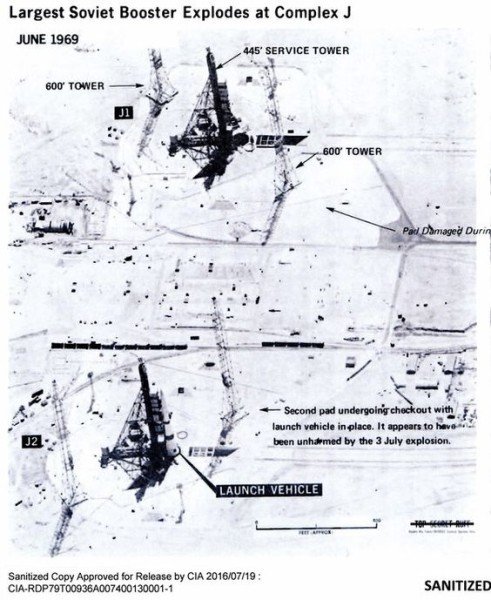
Top Secret Soviet Missiles -1, photos from the US reconnaissance satellite
Together with cosmonautics will disappear nye fotorazvedchik. To create a current map on the basis of photographs of the territory will be possible only by aerial photography. But, if the satellites can fly over any point, the aircraft will need permission from the country they will fly over. And countries can effectively hide not only their military facilities, but also places of something unpleasant, like man-made disasters or concentration camps.
Conclusion : Cosmonautics makes the world more open.
This round moon does not care
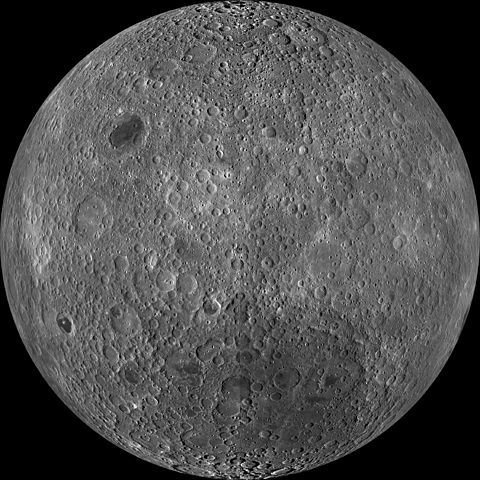
The reverse side of the Moon, photo NASA
Modern ground-based telescopes are almost equal to the Hubble Space Telescope. Adaptive optics can almost completely remove atmospheric vibrations, which distort the picture for the ground observer. But from the Earth, not everything can be seen and recognized. Without astronautics, until now, we would have known nothing about what the reverse side of the moon looks like. And at the beginning of the 21st century there would be controversy about the presence of plants and animals on Mars and Venus – yes, a lot of data can be obtained at a distance, but only direct observation from a close interplanetary station or even a landing on the surface of a robot can definitively stop the disputes of conflicting scientific Models. For Venus, one could only obtain a low resolution map for radar observations. And no one would know what is happening under the opaque atmosphere of Titan. If desired, one could even believe that on the opposite side of the Sun there is a second Earth – there is the Lagrangian point L 3 and the idea that there might be something was once quite popular
Conclusion : Astronautics gives us unique knowledge.
With the Day of Cosmonautics!








